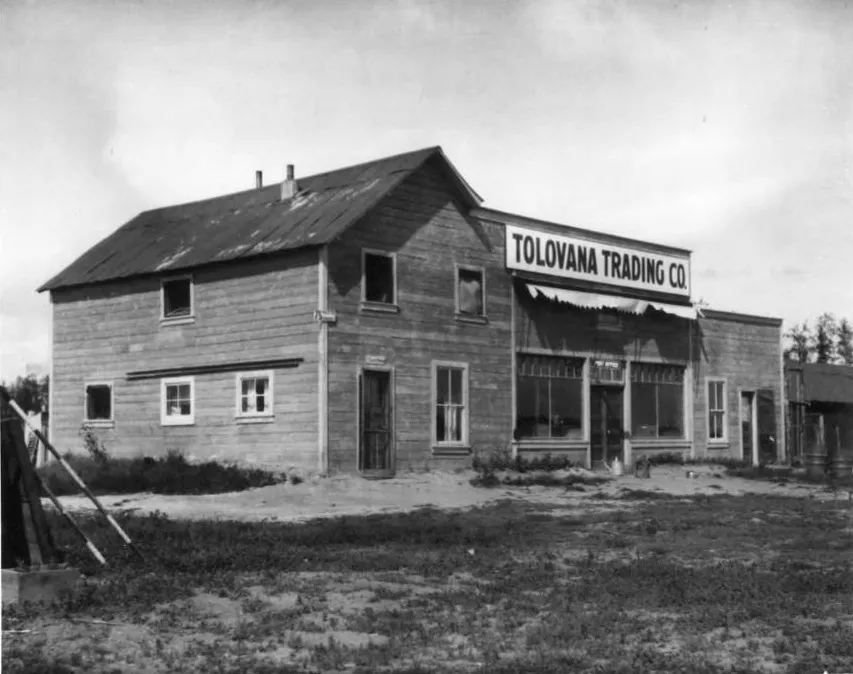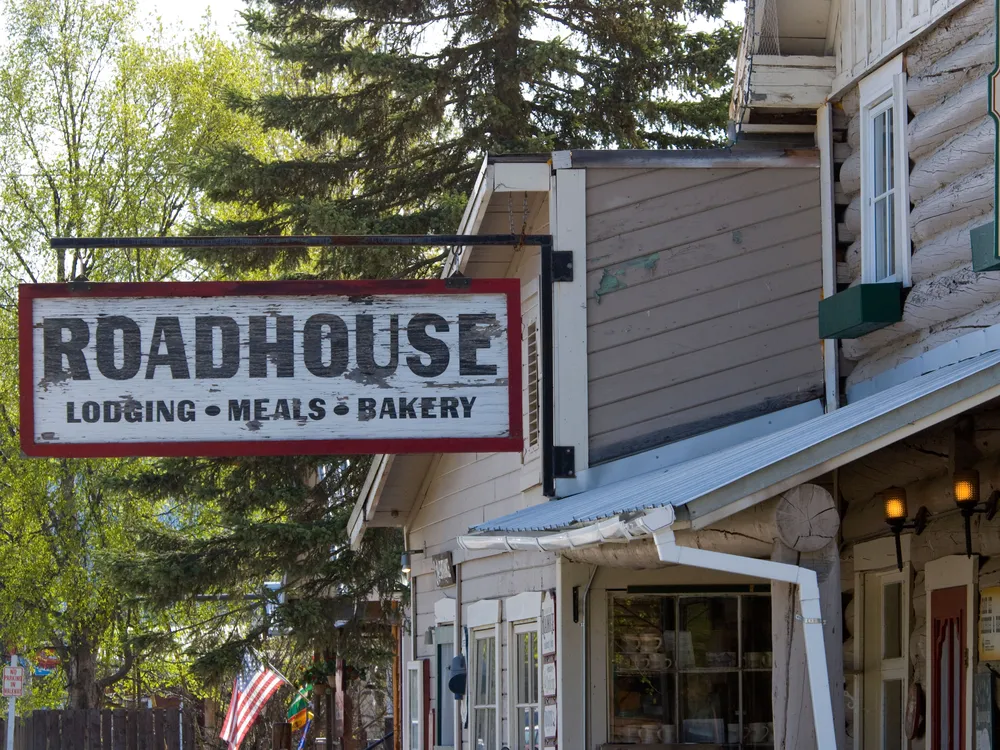Roadhouses, like the Talkeetna Roadhouse (shown here), are a testament to Alaska’s pioneer ancestors and an essential part of the state’s Northern heritage.
Daniel Tycholiz/Alamy
Mary Knight, a dog musher in Fairbanks, Alaska, had been looking for an off-the-grid property that she could eventually use for sledding tours, when she happened upon Tolovana Roadhouse. Built in 1924, the century-old property sits in the wilderness at the confluence of the Tanana and Tolovana Rivers, about 50 trail miles northwest of Nenana, the nearest city.
“In my seven or so years of looking at properties, there was nothing that checked off as many boxes as this one did,” says Knight.
Completely renovated by its former owner, the roadhouse had enough indoor space to accommodate small groups, was accessible by trail and was reachable from Fairbanks by less than a full day’s travel. The roadhouse also happened to be the initial transfer point in the Serum Run of 1925, a lifesaving transport of diphtheria antitoxin by dog sled that later inspired the Iditarod sled dog race.
“I wasn’t necessarily looking to purchase a place listed on the National Register for Historic Places,” says Knight, “but when it came up for sale, I jumped.”
Tolovana Roadhouse was one of thousands of roadhouses that popped up along Alaska’s trails and rivers in the late 19th and early 20th centuries.
As it turns out, Tolovana Roadhouse was one of thousands (the exact number varies) of roadhouses that popped up along Alaska’s trails and rivers in the late 19th and early 20th centuries, providing food, bedding and comfort to the large number of trappers, gold miners and traders who’d arrived in the then-territory looking for their fortunes. These sometimes temporary—often permanent—lodgings played a huge role in the history of the Alaskan frontier, serving as one-stop shops for travelers arriving by dog team or stagecoach, or even on foot, through intense cold and snow. They were spaced every 15 to 20 miles along main routes like the Valdez-Fairbanks Trail, which provided the first overland access into much of Alaska’s interior, and the Iditarod Trail between Seward and Nome, and ranged from groups of tumbledown tents to two-story timber cabins where travelers could…
Click Here to Read the Full Original Article at Travel | smithsonianmag.com…
